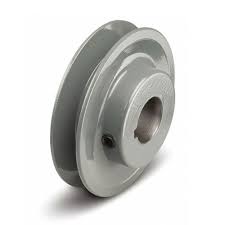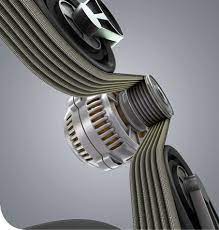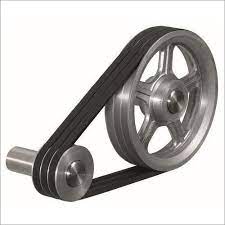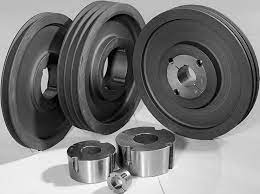Product Description
Welcome to explore our range of conveyor rollers tailored to various standards, diameters, lengths, and types.
We take pride in producing high-quality solutions that meet your specific needs. Don’t hesitate to reach out to us with your requirements and let us exceed your expectations.
Product Description
| Description | Fabrication Services flat belt idler pulley for belt conveyor |
| Application | Used in electric power, metallurgy,mine,coal, cement,steel,chemical, port, hydroelectric power and grain industries |
| Pipe/Tube/Shell | 1)Material:Q235 Steel |
| 2)Diameter:30cm-300cm | |
| 3)Length:500mm-5000mm,depends on the belt width of the conveyor | |
| Shaft/Axis | Material:#45 Steel |
| Bearing | Big roving crack, deep groove ball with double sealing |
| Welding | Pipe and bearing housing with automatic welding |
| Surface | Smooth steel color surface, rubber lagging surface |
| Color | Red,green,blue or as require |
| Service life | More than 30,000 hours |
| Standard | GB,ISO,DIN,CEMA,JIS |
Feature of belt conveyor drive drum for conveyor
1. Steady running, reliable quality and reduce maintenance;
2. Less movement longitudinally, rotating smoothly, extends the life span;
3. Various bearing housing and sealing structure are available for the customers choice;
4. Multipass labyrinthine sealing,preventing the mixed dirt and water immersed;
5.Manufacturing by steel pipe specially for of high precision roller, ensuring the strong load,
low shaking and less noise.
Our Advantages
Our Advantages:
- Experienced manufacturer specializing in electric rollers.
- ISO9001 certified company located in the mechanical and electrical capital of China.
- Products have obtained safety mark certificates and explosion-proof certificates.
- Advanced equipment and precision production capabilities.
- Successfully applied products to large state-owned enterprises.
- Committed to customer satisfaction and continuous improvement.
HangZhou Xihu (West Lake) Dis. Machinery Co., Ltd. is a manufacturer mainly engaged in the production of electric rollers. Our company is located in the HangZhou area of ZheJiang Province, and our series of products such as electric rollers are of high quality and affordable.
Welcome to consult and purchase.
HangZhou Xihu (West Lake) Dis. Machinery Co., Ltd. is located in the famous mechanical and electrical capital of China – Xihu (West Lake) Dis.. Our company has passed the ISO9001 quality system certification, and the electric drum is the first in the industry to obtain the safety mark certificate and explosion-proof certificate for mining products. We have advanced equipment for casting, forging, welding, heat treatment, chemical analysis type experiments, and have introduced a batch of precision production equipment and testing equipment such as CNC gear grinding machines, CNC boring and milling machines, worm grinding machines, and carbon nitrogen co infiltration furnaces.
Our products have been successfully applied to large state-owned enterprises such as GHangZhouba Group, CHINAMFG Petrochemical, CHINAMFG Oilfield, Xihu (West Lake) Dis. Mining Group, Shougang, Hangang, Taigang, Jigang, Yigang, and Baosteel Group.
The company always adheres to the development measures of emphasizing both introduction, absorption, and research and development, and continues to adhere to the business philosophy of “building a city with integrity”. With customer satisfaction as the center, continuous improvement as the driving force, and the unremitting efforts of all employees, we provide users with satisfactory products and services.
We are all sincere and virtuous, and we strive for CHINAMFG and success!
For more details, please feel free to contact us!
Certifications
FAQ
Q1. Are you a manufacturer?
A. Yes, we have been manufacturing and selling conveyor belts for 20 years.
Q2. Can you produce belts of my own brand?
A: Yes, we can.
Q3. What about the lead time?
A. 1) Sample 5~14 days 2) 15~30 days according to the order quantity
Q4. What are the payment terms?
A. We prefer T/T, 30% of the order is prepaid, and the remaining 70% is paid before shipment
Q5. How do you guarantee product quality?
A. 1) R&D center with independent design and development capabilities 2) We have an independent testing laboratory with full performance testing capabilities for conveyor belts.
We can test various materials, rubber, fabrics, semi-finished products and finished products.
/* January 22, 2571 19:08:37 */!function(){function s(e,r){var a,o={};try{e&&e.split(“,”).forEach(function(e,t){e&&(a=e.match(/(.*?):(.*)$/))&&1
| Material: | Aluminum Alloy |
|---|---|
| Surface Treatment: | Baking Paint |
| Motor Type: | Frequency Control Motor |
| Installation: | Slope |
| Warranty: | 1.5 Years |
| Machinery Test Report: | Provided |
| Samples: |
US$ 300/Piece
1 Piece(Min.Order) | |
|---|
| Customization: |
Available
| Customized Request |
|---|

Are there different types of drive belt pulleys, and how do they vary in applications?
Yes, there are different types of drive belt pulleys, and they vary in their applications based on various factors. Here’s a detailed explanation of the different types of drive belt pulleys and their varying applications:
1. V-Belt Pulleys:
V-belt pulleys are one of the most common types of pulleys used in drive systems. They have a V-shaped groove that matches the cross-section of V-belts, which helps improve traction and prevent belt slippage. V-belt pulleys are suitable for applications that require high torque transmission, such as in industrial machinery, HVAC systems, and automotive engines. They are versatile and can accommodate a wide range of belt widths and power requirements.
2. Timing Pulleys:
Timing pulleys, also known as synchronous pulleys, have evenly spaced teeth on their periphery. They are used with timing belts, which have corresponding teeth, to ensure precise power transmission and synchronization of rotational motion. Timing pulleys are commonly found in applications that require accurate positioning, such as in CNC machines, robotics, printing presses, and automotive engine timing systems. They provide excellent torque transfer and are resistant to slippage.
3. Flat Belt Pulleys:
Flat belt pulleys have a flat, smooth surface without grooves or teeth. They are used with flat belts, which rely on friction for power transmission. Flat belt pulleys are suitable for applications that require high-speed rotation, such as in textile machinery, packaging equipment, and conveyors. They offer a simple and cost-effective solution for transferring power in systems that don’t require high torque.
4. Grooved Pulleys:
Grooved pulleys, also known as serpentine or multi-groove pulleys, have multiple grooves or channels on their periphery. These grooves accommodate multiple belts, typically V-belts or ribbed belts, running side by side. Grooved pulleys are commonly used in automotive engines, where a single pulley may drive multiple engine accessories, such as the alternator, power steering pump, and air conditioning compressor. They allow for compact designs and efficient power distribution.
5. Variable Speed Pulleys:
Variable speed pulleys, also called adjustable pulleys or variable pitch pulleys, provide the ability to change the effective diameter of the pulley, allowing for variable speed control. They consist of two halves that can be adjusted to increase or decrease the pulley diameter, altering the speed of the driven component. Variable speed pulleys are used in applications that require adjustable speed control, such as in exercise equipment, industrial machinery, and certain types of transmissions.
6. Idler Pulleys:
Idler pulleys are used to redirect or change the direction of a belt in a drive system. They do not transmit power but instead help guide and maintain proper belt tension. Idler pulleys are commonly used in conjunction with other pulleys in automotive engines, industrial machinery, and HVAC systems. They help improve belt wrap around driven pulleys, increase belt life, and reduce vibration.
7. Tensioner Pulleys:
Tensioner pulleys, also known as belt tensioners, are specifically designed to maintain proper tension in belt drive systems. They are often spring-loaded and provide a constant force against the belt, compensating for belt stretch or wear over time. Tensioner pulleys are commonly found in automotive engines, where they ensure optimal belt tension to prevent slippage, reduce noise, and extend belt life.
Each type of drive belt pulley has its own unique design and features that make it suitable for specific applications. The selection of the pulley type depends on factors such as the type of belt being used, the power requirements, the desired speed control, and the specific application requirements. By choosing the appropriate pulley type, engineers can ensure efficient power transmission, reliable operation, and optimal performance in various industrial, automotive, and mechanical systems.

What maintenance procedures are necessary to ensure the reliability of drive belt pulleys?
Proper maintenance procedures are essential to ensure the reliability and longevity of drive belt pulleys. Here’s a detailed explanation of the maintenance procedures necessary for drive belt pulleys:
1. Regular Inspection:
Perform regular visual inspections of the drive belt pulleys to check for signs of wear, damage, or misalignment. Look for cracks, fraying, glazing, or excessive wear on the pulley surface and the grooves. Inspect the pulley for any signs of misalignment, such as a wobbling or off-center rotation. Early detection of issues allows for timely corrective action and minimizes the risk of pulley failure.
2. Belt Tension Adjustment:
Maintain proper belt tension by periodically checking and adjusting the tension according to the manufacturer’s specifications. A loose or overtightened belt can lead to belt slippage, reduced power transmission, and premature pulley wear. Use a belt tension gauge or follow the recommended tension adjustment procedure to ensure the belt is correctly tensioned for optimal performance and longevity.
3. Belt Condition and Replacement:
Regularly inspect the condition of the drive belt and replace it as needed. Over time, belts can deteriorate, become brittle, or develop cracks. A worn-out or damaged belt can cause excessive stress on the pulley, leading to pulley wear or failure. Replace the belt if you notice any signs of damage, including excessive wear, fraying, or loss of tension. Follow the manufacturer’s recommendations for belt replacement intervals.
4. Pulley Cleaning:
Keep the drive belt pulleys clean from dirt, debris, and oil buildup. Accumulated debris can interfere with belt engagement and increase friction, leading to premature wear on both the belt and the pulley. Clean the pulleys regularly using a mild detergent and a soft brush or cloth. Avoid using harsh chemicals or solvents that may damage the pulley surface or the belt material.
5. Lubrication:
Some drive belt pulleys may require lubrication to reduce friction and maintain smooth operation. Refer to the manufacturer’s guidelines to determine if lubrication is necessary and the recommended lubricant type. Apply the lubricant sparingly and ensure that it does not come into contact with the belt, as it can cause slippage or degradation of the belt material.
6. Pulley Alignment:
Check and maintain proper pulley alignment to prevent excessive belt wear and premature pulley failure. Misaligned pulleys can cause the belt to run at an angle, resulting in uneven wear and increased stress on the pulley. Use alignment tools or consult a professional to ensure the pulleys are correctly aligned. Adjust or replace pulleys as necessary to achieve proper alignment.
7. Environmental Protection:
Protect the drive belt pulleys from extreme environmental conditions that can accelerate wear and deterioration. Shield the pulleys from excessive moisture, high temperatures, chemicals, and abrasive contaminants. In harsh environments, consider using pulley covers or shields to provide additional protection and prolong the pulley’s lifespan.
8. Professional Inspection:
Periodically have the drive belt pulleys inspected by a qualified technician or during routine maintenance visits. Professional inspection can help detect any potential issues that may not be easily visible or apparent during regular inspections. A trained professional can perform more thorough assessments, including pulley runout measurement, alignment checks, and overall system evaluation.
By following these maintenance procedures, you can ensure the reliability and longevity of drive belt pulleys. Regular inspection, proper tension adjustment, belt condition monitoring, pulley cleaning, lubrication (if necessary), pulley alignment, environmental protection, and periodic professional inspection contribute to the optimal performance and reliability of drive belt pulleys in power transmission systems.

How do drive belt pulleys assist in power transmission within vehicles?
Drive belt pulleys play a crucial role in power transmission within vehicles, ensuring the efficient operation of various components. Here’s a detailed explanation of how drive belt pulleys assist in power transmission within vehicles:
1. Power Source Connection:
The drive belt pulley is connected to the power source, typically the engine crankshaft in vehicles. It is mounted on a shaft that rotates with the engine. As the engine runs, the rotational motion of the crankshaft is transferred to the drive belt pulley.
2. Belt Engagement:
A belt, such as a V-belt or a serpentine belt, is routed around the drive belt pulley and other driven components. The belt is specifically designed to fit into the grooves of the pulley’s rim. When the drive belt pulley rotates, it engages with the belt, causing the belt to move along with the pulley.
3. Power Transfer:
As the drive belt pulley rotates and drives the belt, the rotational power from the engine is transmitted to the belt. The belt, in turn, transfers this power to other components connected to it. These components can include the alternator, water pump, power steering pump, air conditioning compressor, and other accessories.
4. Multiple Component Operation:
Drive belt pulleys are designed to accommodate multiple belts and drive various components simultaneously. In vehicles, a single drive belt pulley can be responsible for driving several components at once. This allows for the efficient operation of multiple systems and accessories within the vehicle.
5. Speed Variation and Torque Transfer:
The use of different-sized drive belt pulleys can vary the speed ratio between the engine and the driven components. By altering the diameter of the pulleys, the rotational speed and torque can be adjusted. This allows for optimized power delivery to different components, matching their specific requirements.
6. Tension Adjustment:
Drive belt pulleys often incorporate tensioning mechanisms to ensure proper belt tension. Proper tensioning is crucial for optimal power transmission and to prevent belt slippage. Tensioning mechanisms, such as spring-loaded arms or adjustable brackets, enable easy maintenance and adjustment of belt tension.
7. Noise and Vibration Damping:
Drive belt pulleys help dampen noise and vibrations generated by the engine and other components. The flexibility and elasticity of the belt, along with the design of the pulley, act as a cushion, reducing the transmission of vibrations and providing smoother operation.
8. Efficient Power Distribution:
Drive belt pulleys ensure the efficient distribution of power within the vehicle. By transferring power from the engine to various components, they enable the functioning of critical systems such as electrical generation, cooling, steering assistance, and air conditioning. This ensures the vehicle’s proper operation and enhances the driving experience.
Overall, drive belt pulleys are integral components in vehicle power transmission systems. By connecting the power source to driven components, accommodating multiple belts, enabling speed variation and torque transfer, and maintaining proper belt tension, they facilitate the efficient operation of various systems and accessories within vehicles.


editor by CX
2024-04-25














